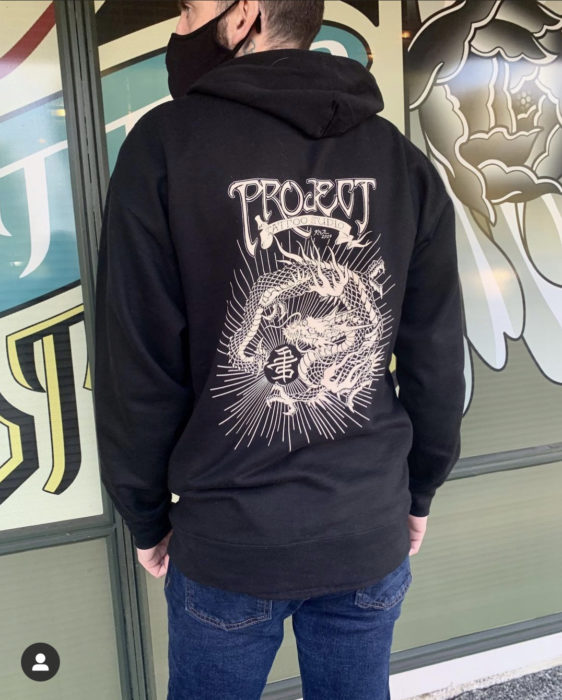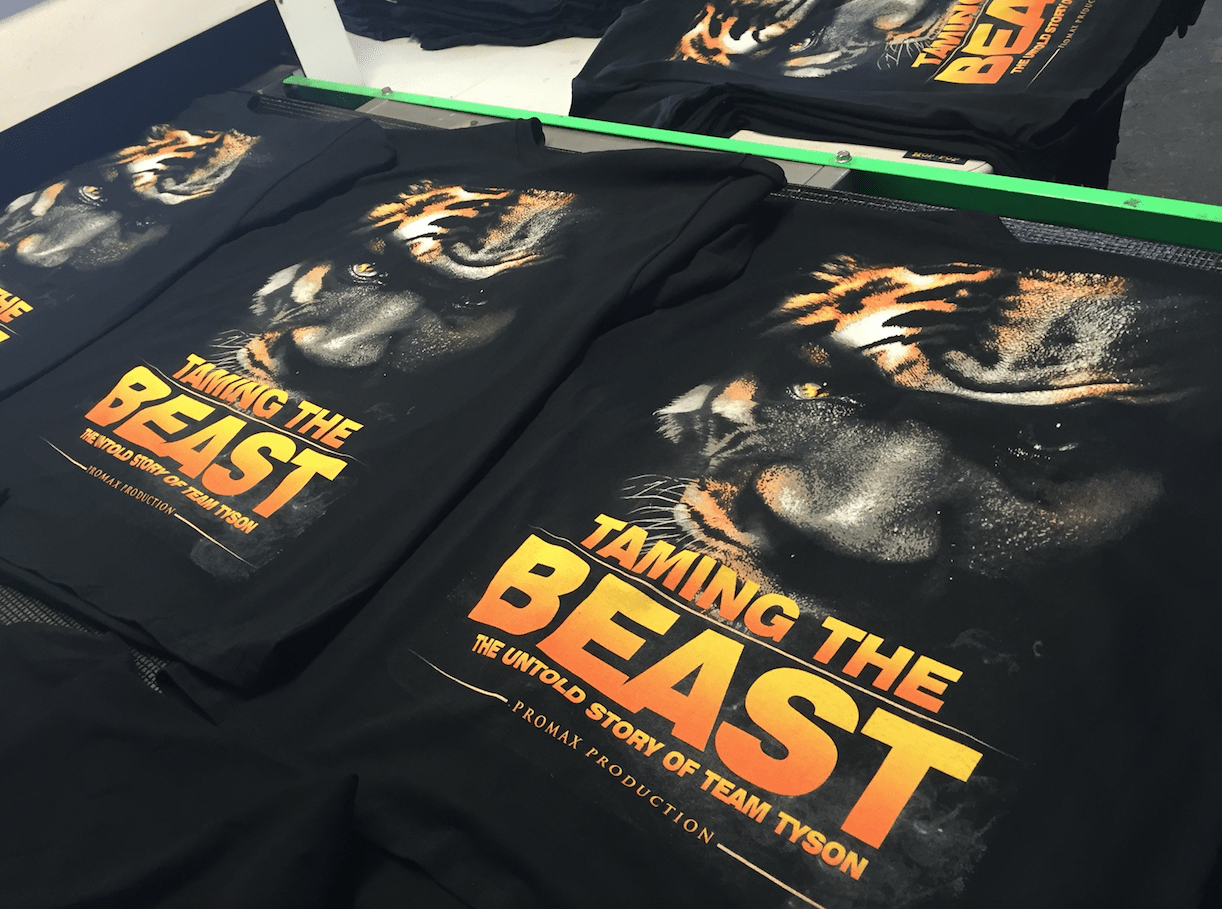High-End Silk Screen Printing for Premium Garments
High-End Silk Screen Printing for Premium Garments
Blog Article
The Ultimate Screen Printing Package: Crucial Tools for Successful Garment Printing
When it comes to screen printing, having the right devices can make all the distinction. What about the inks and displays? You'll soon uncover how these components function with each other to raise your printing video game.
Comprehending Display Printing Basics
When you engage on your own in screen printing, you'll find it's both a science and an art. This strategy entails transferring ink through a mesh screen onto material, developing dynamic layouts. You'll start by preparing your displays, which needs using a light-sensitive solution. Once dried, you subject the display to UV light with your layout put on top, permitting you to produce a pattern.
Next, you'll establish your printing station, aligning your display with the garment. Using a squeegee, you'll push the ink via the display, guaranteeing even protection. The appeal of display printing depends on its adaptability; whether you're publishing complex patterns or strong graphics, the procedure stays the very same.
As you technique, you'll learn regarding ink types, drying times, and color blending. Each print is a chance to refine your technique and express your creativity, making display publishing a fulfilling undertaking for any person passionate concerning style.
Crucial Elements of the Display Printing Kit
To start with screen printing, you need to recognize the crucial elements of your set. You'll want to acquaint yourself with the basic tools, the kinds of inks and solutions you'll utilize, and the tools for application. Each component plays an essential duty in accomplishing top quality prints on your garments.
Basic Tools Summary
A fully equipped display printing set is vital for any person aiming to create magnificent garment styles. Start with a strong screen printing structure, which holds your mesh firmly for specific printing. You'll likewise require a squeegee to push ink via the mesh onto your fabric. Do not forget the direct exposure unit or source of light, essential for moving your design onto the screen. A washout terminal helps you tidy screens after usage, guaranteeing they await your following project. Invest in a registration system to straighten numerous shades precisely. With these essential components, you'll have a solid foundation for your display printing trip and can concentrate on bringing your creative visions to life.
Solutions and inks
After collecting the standard equipment, your next focus ought to get on inks and solutions, which play a vital role in achieving resilient and vivid prints. When selecting inks, consider water-based, plastisol, or discharge inks based on the material type and desired finish. Water-based inks are soft and eco-friendly on garments, while plastisol uses toughness and intense shades.
Solutions, on the various other hand, are necessary for producing your screens. You'll want to select a premium emulsion that suits your ink type and exposure approach.
Devices for Application

Picking the Right Screens for Your Tasks
When you're picking displays for your jobs, the mesh matter and structure product are vital aspects to consider. A greater mesh count is fantastic for fine information, while the right framework product can boost longevity and security. Recognizing these aspects will help you attain the finest results in your display printing undertakings.
Screen Mesh Matter
Picking the best screen mesh matter is vital to achieving the wanted cause your display printing jobs. The mesh count describes the variety of strings per inch in the display, impacting exactly how much ink obtains transferred onto your garment. For great lines and detailed layouts, go with a higher mesh matter, usually in between 200 and 305. If you're collaborating with thicker inks or bold styles, a lower mesh matter, around 110 to 160, will work much better. Always take into consideration the type of ink and fabric you're utilizing, as these factors affect the mesh count choice. Explore different matters can help you locate the perfect equilibrium for your specific jobs, ensuring crisp, lively prints every time.
Mount Material Options
The display framework product you select plays a substantial function in the high quality of your prints. You have actually got a few alternatives to evaluate, each with its benefits. Light weight aluminum frames are lightweight, sturdy, and resistant to rust, making them excellent for long-term use. They give outstanding stress, ensuring crisp prints. On the other hand, timber frameworks are more conventional and can be a lot more affordable, however they're larger and might warp over time. You may favor aluminum for its integrity if you're simply starting. For larger tasks, pick frames that can endure the tension needed for great details. Eventually, read this post here pick a material that suits your workflow and budget plan while guaranteeing your prints appear looking sharp and professional.
Selecting Inks for Various Fabrics
How do you assure your screen printing layouts look last and vivid on various textiles? Selecting the ideal ink is key. If you're publishing on polyester or artificial blends, think about making use of plastisol inks.
Don't fail to remember about specialty inks like discharge or metal inks. Discharge inks can eliminate color from fabric, leaving a soft print, while metallic inks include a shiny surface that attracts attention. Always check your inks on the specific fabric before devoting to a large run; this assists you determine color vibrancy and toughness.
Lastly, bear in mind the material's weight and appearance. Choosing the best ink for each and every fabric view it now type will certainly guarantee that your designs not only look excellent yet also endure the examination of time.
The Importance of Mops in Printing
Squeegees play an indispensable duty in achieving top quality prints in display printing. They're your main device for moving ink via the pattern onto the fabric, and the right squeegee can make all the difference. When you apply consistent pressure with a squeegee, you ensure an also circulation of ink, lowering the opportunities of blotchy or uneven prints.
Selecting the ideal durometer or firmness of your squeegee is crucial, as it influences just how much ink is pulled with the mesh. A softer squeegee is fantastic for detailed designs, while a stronger one functions well for bold graphics. In addition, the size of the squeegee ought to match your screen dimension to enhance your printing process.
Taking time to understand your method with the squeegee will lead to cleaner, sharper prints. So, do not ignore this essential device-- learn more about it, and you'll boost your display printing game.
Preparing Your Artwork and Solution
Achieving excellent prints starts long prior to you pick up your squeegee. When you're delighted with the layout, print it on transparency movie, keeping in mind that the darker the picture, the far better it blocks light throughout direct exposure.
Next, choose the right emulsion for your task. Apply it uniformly to your display in a poorly lit area to stop premature exposure. Enable it to completely dry completely, ideally in a dark area, to guarantee outstanding outcomes. Once your display is prepared, expose it to UV light according to your solution's guidelines. The light will set the solution where it strikes, leaving your design unexposed.
After rinsing the unexposed emulsion, let the screen dry completely. With your artwork and emulsion prepared, you're established for the printing procedure!
Upkeep Tips for Long-lasting Tools
Although it may seem tiresome, routine upkeep of your display printing devices can considerably prolong their life-span and warranty regular outcomes. Beginning by cleansing your displays immediately after use. Use a mild solvent to remove ink residue; this helps prevent accumulation that can wreck future prints. Store your screens flat to prevent warping, and keep them away from direct sunlight. custom screen printing.
For mops, wipe the blade after each use to stop ink from drying on it. Frequently look for nicks or damage and replace them as needed. Do not neglect your direct exposure system-- clean the glass surface routinely to confirm ideal light direct exposure.

Frequently Asked Inquiries
Can I Evaluate Print on Dark Colored Fabrics?
Yes, you can screen print on dark colored materials! Simply use a suitable nontransparent ink made for dark materials.
How Do I Clean My Screens After Publishing?
To cleanse your displays after printing, you'll require a stress washer or hose to eliminate excess ink. After that, utilize a display cleaner or light cleaning agent with a soft brush to scrub away deposit. Rinse thoroughly.
What Security Equipment Do I Required While Display Printing?
When display printing, you'll require handwear covers to secure your hands, a mask to stay clear of breathing in fumes, and safety and security goggles to secure your eyes from inks and chemicals. Being cautious guarantees a safe and pleasurable experience.
Can I Use the Kit for Other Materials Besides Fabric?
Yes, you can use the kit for various other materials besides material. It works well on surfaces like plastic, paper, and wood. Simply ensure the ink and methods fit the material you select.
For how long Does It Take for Ink to Heal?
Ink generally takes about 24 hours to treat completely, but it can differ based upon the type and thickness. You'll intend to inspect the producer's guidelines for details healing times to assure ideal results.
Using a squeegee, you'll push the ink via the screen, guaranteeing also protection. You'll need a dependable squeegee, which assists evenly disperse ink across your display.Selecting the right display mesh count is essential to attaining the desired outcomes in your screen printing tasks. The mesh count refers to the number of strings per inch in the screen, affecting just how much ink gets moved onto your garment.To clean your screens after printing, you'll need a pressure washer or hose to eliminate excess ink.
Report this page